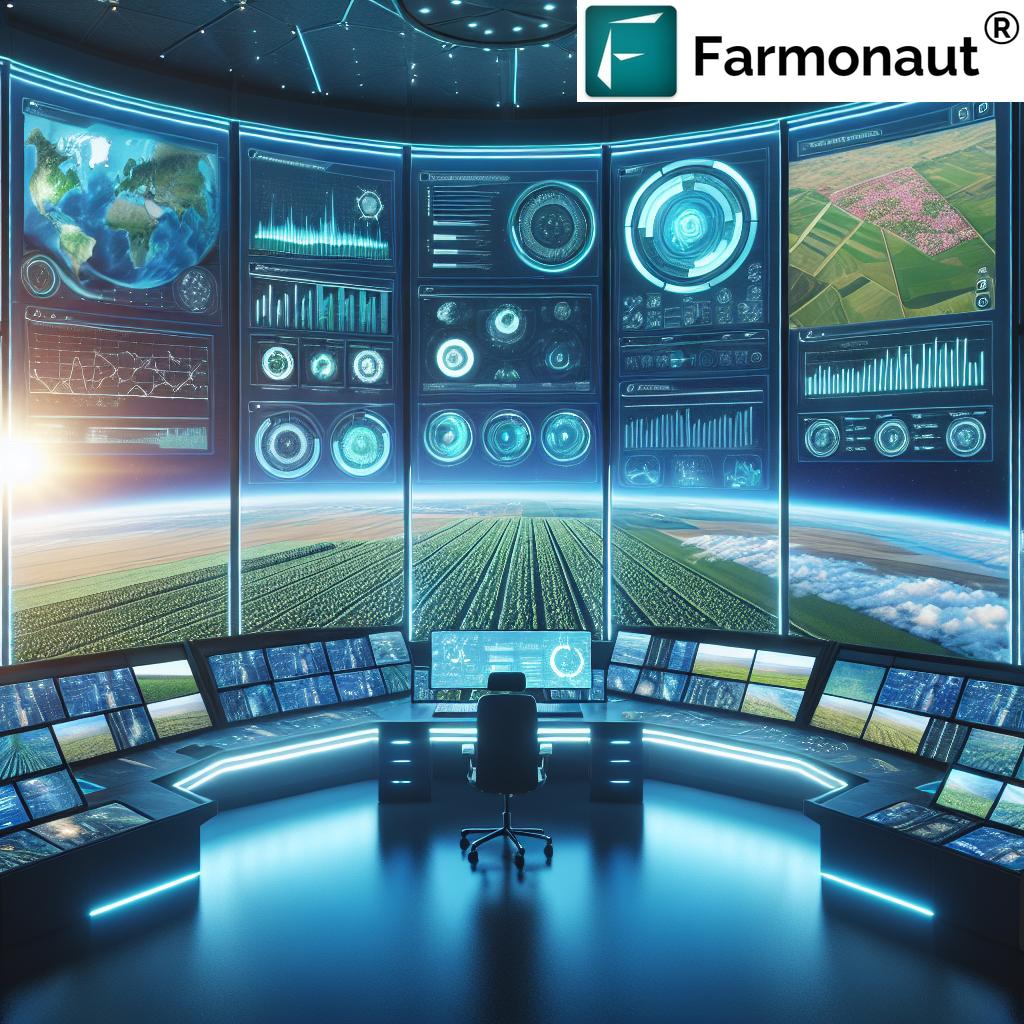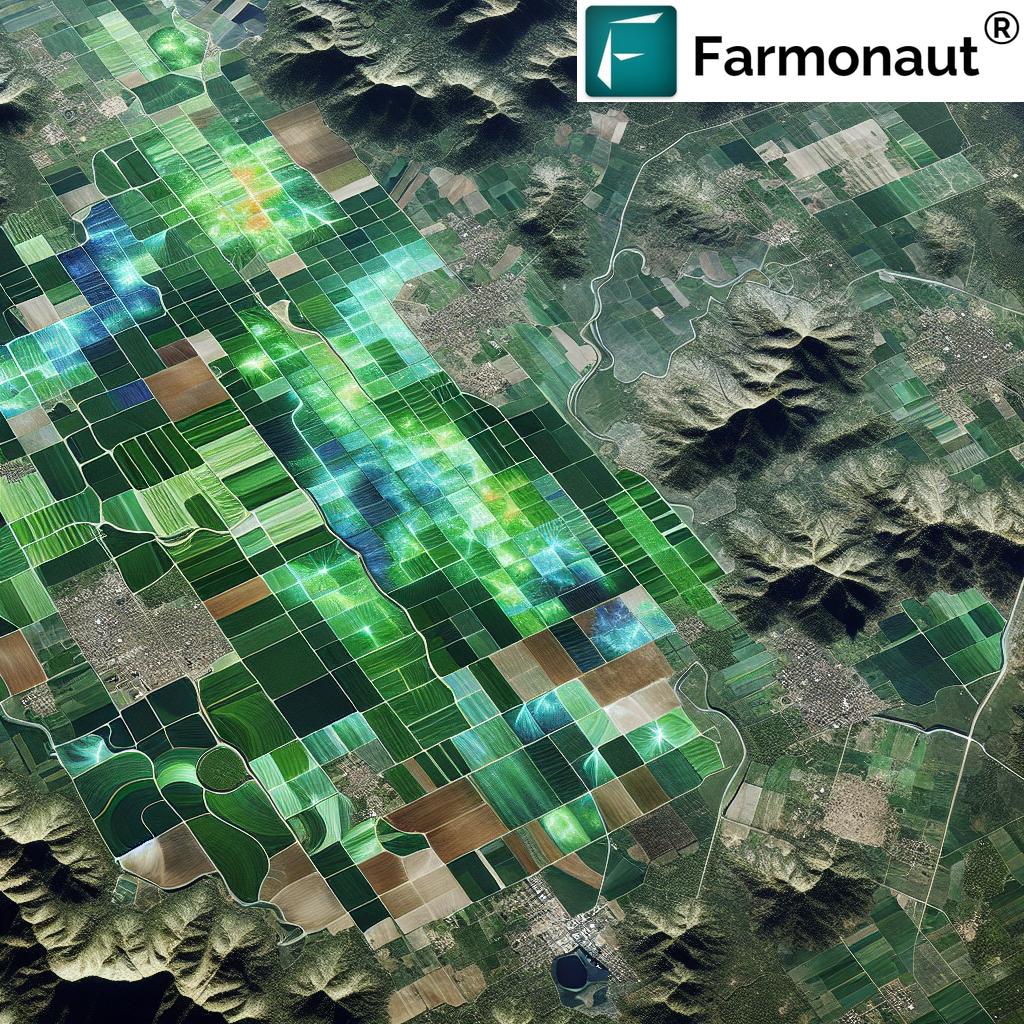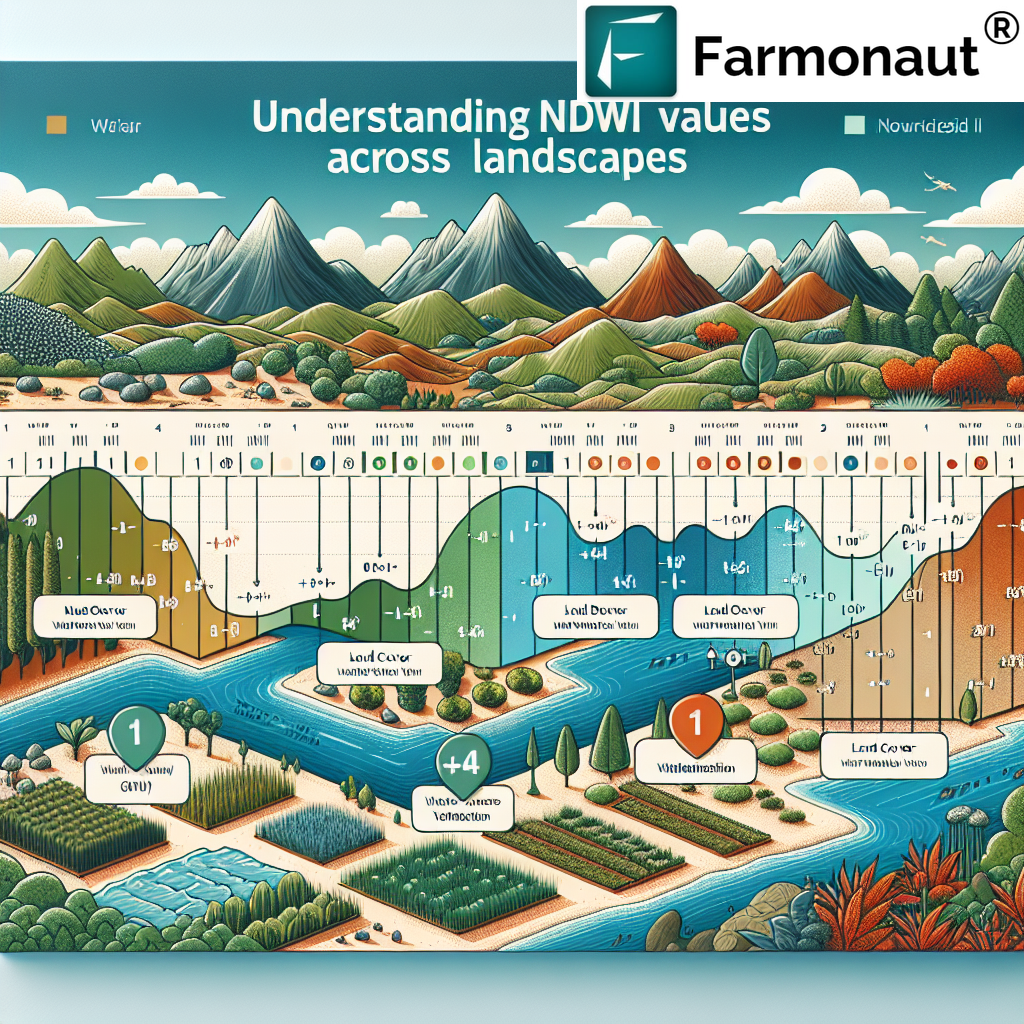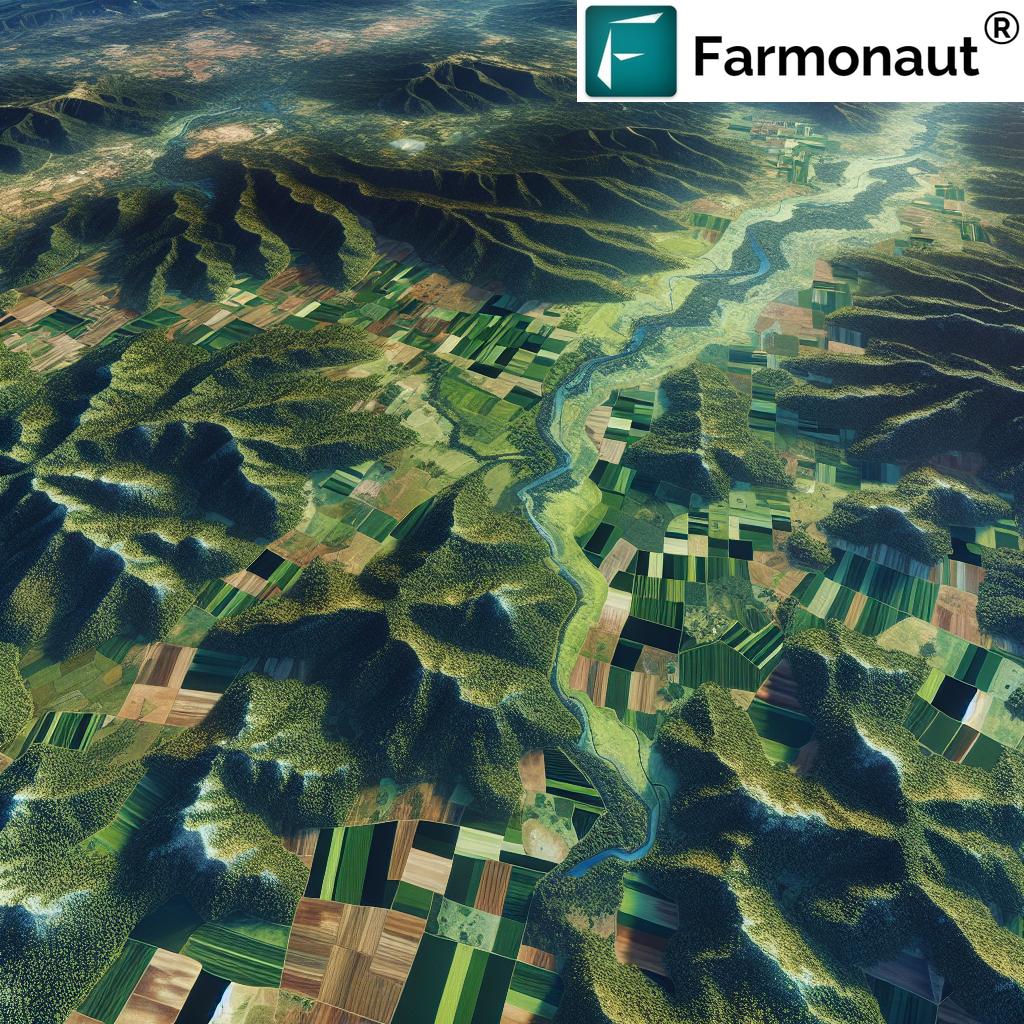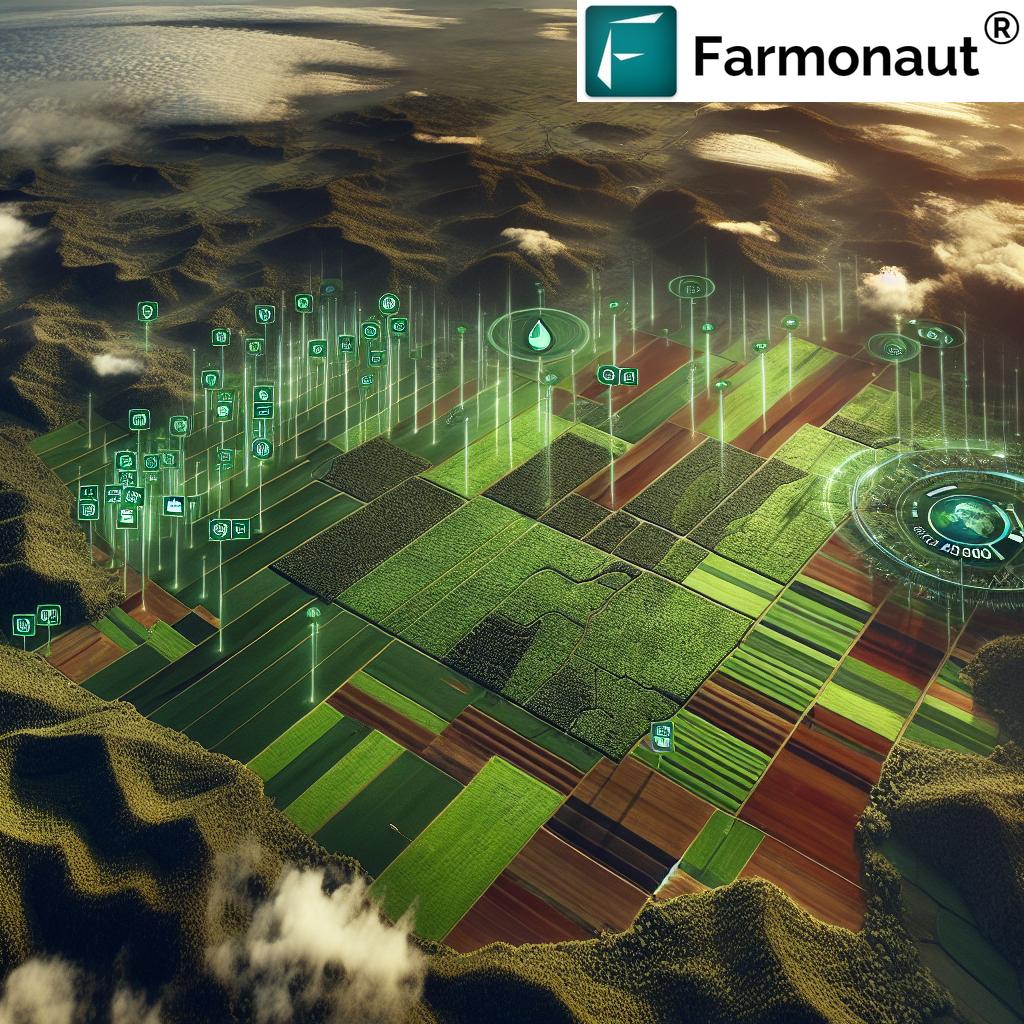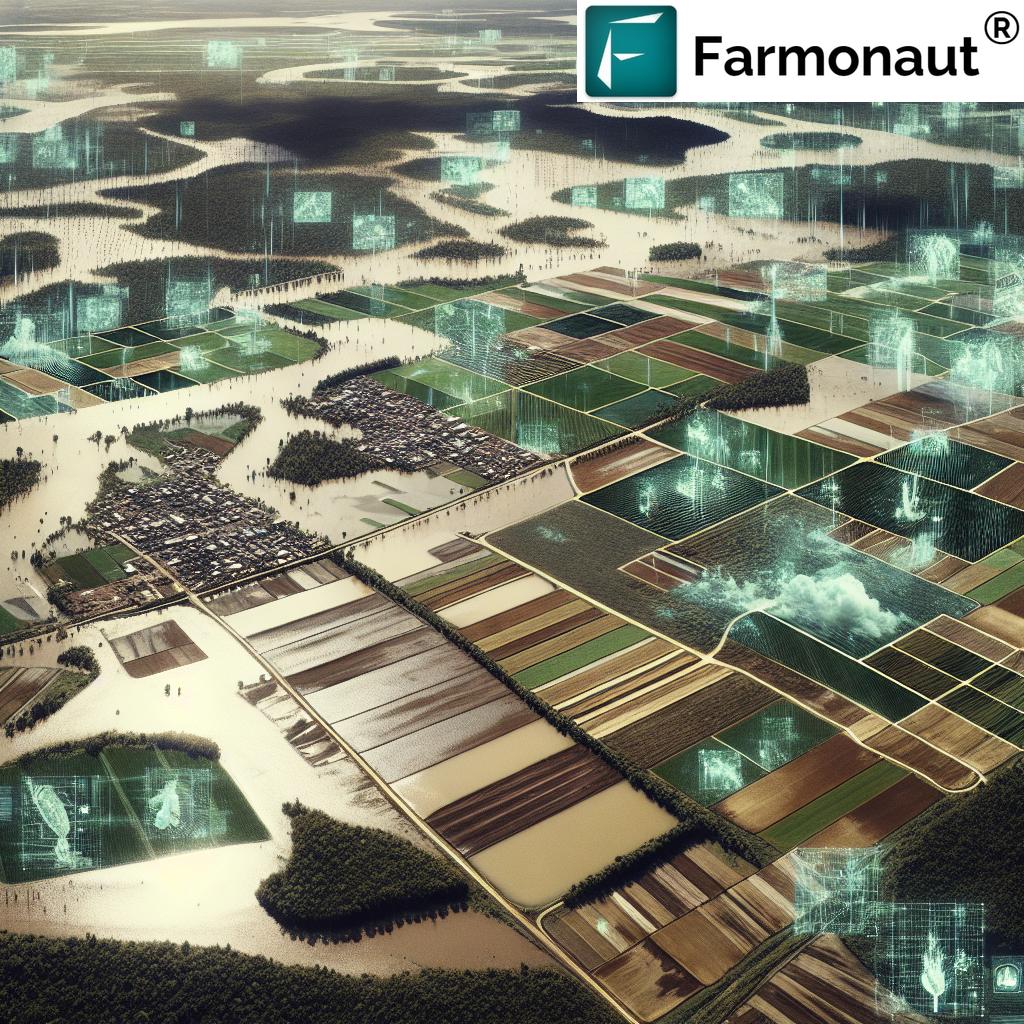Agriculture Satellite Mapping Services Market: 2025 Trends
Introduction: The Digital Transformation of Agriculture
The agriculture satellite mapping services market stands at the threshold of transformative change in 2025, revolutionizing modern farming and services in agriculture with technology-driven insights that were unimaginable a decade ago. Digital transformation, powered by satellite imagery, Geographic Information Systems (GIS), remote sensing, and artificial intelligence (AI), is enabling farmers and stakeholders to optimize operations, improve yields, and promote sustainable agricultural practices like never before. As data becomes the heart of agricultural evolution, integrating advanced technologies – from real-time crop monitoring to blockchain-based traceability – is empowering or enabling the agriculture community to meet demanding global needs for food security, efficient resource use, and environmental resilience.
In this comprehensive exploration, we dive into the 2025 trends steering the agriculture satellite mapping services market, the technologies at its core, their impact on markets (including the unique Satellite Beach Farmers Market), and how agriculture services are being redefined for a smarter, more sustainable future.
“The global agriculture satellite mapping market is projected to reach $1.2 billion by 2025, driven by precision farming demand.”
Key Drivers Shaping the Agriculture Satellite Mapping Services Market in 2025
By 2025, several factors are driving the rapid expansion and increasing adoption of satellite mapping in agriculture:
- Increasing need for precise, data-driven decision-making in farming.
- Rapid integration of satellite imagery, AI, and big data analytics in agricultural operations.
- Rising demands for sustainable practices to battle climate change, chemical runoff, and resource inefficiency.
- Government initiatives promoting digital agriculture transformation worldwide.
- Growth in private sector and agritech startup participation, enhancing innovation and service accessibility.
- Emergence of new agriculture services and consulting platforms that leverage cutting-edge satellite mapping.
- Support for smallholder and remote farmers via mobile apps and cloud-based farm management tools, democratizing access to high-resolution satellite data.
The convergence of these drivers is enabling the market to evolve swiftly, with satellite mapping services at the forefront of agricultural modernization.
Advances in Agricultural Satellite Technologies
Precision Agriculture and Variable Rate Application
At the heart of transformation in the agriculture satellite mapping services market is the rise of precision agriculture. This approach leverages advanced satellite mapping to enable variable rate application (VRA) of key inputs such as fertilizers, pesticides, and irrigation across farmland.
How does this benefit farmers?
- Satellite data detects variations in soil moisture and nutrient levels within large tracts, allowing for inputs to be applied only where needed—no more blanket application leading to waste.
- Precision agriculture services in agriculture reduce excess input costs and mitigate chemical runoff, lessening environmental and greenhouse gas impact.
- By monitoring and highlighting early-stage pest infestations, farmers can target intervention, reducing crop losses and improving health and yields.
- The overall result: Consistent, data-driven optimization of operations and resource allocation.
These agriculture services are rapidly evolving to meet the demands of modern, sustainable farming.
Explore advanced large-scale farm management and data-driven advisory:
Farmonaut Large Scale Farm Management Platform
Integration of GIS, Artificial Intelligence and Remote Sensing
The power of geographic information systems (GIS) combined with remote sensing and AI is driving unparalleled granularity in crop monitoring—a cornerstone of the evolving agriculture satellite mapping services market.
Key technologies integrated in 2025:
- Multispectral and hyperspectral imaging provides detailed insights into vegetation health, soil conditions, water stress, and early stress markers in crops.
- AI-driven analytics extract actionable intelligence from massive datasets, detecting subtle patterns, forecasting yields, and identifying pest/disease outbreaks well in advance.
- Near real-time weather and environmental pattern monitoring support critical risk management, enabling timely intervention against droughts, floods, or unseasonal conditions.
Benefit for modern farming: Large tracts of farmland that would otherwise require manual and costly assessment are remotely, quickly, and efficiently monitored—empowering better decision making.
See how AI and satellite data power smarter farming decisions:
JEEVN AI: The Future of Smart Farming with Satellite & AI Insights
Blockchain and Traceability in Agricultural Supply Chains
Traceability is critical for today’s high-value agricultural supply chains. Consumers and regulators expect transparency around origin, quality, and sustainability of agricultural products.
How Blockchain Combined with Satellite Mapping Enables Change:
- Geo-tagged satellite data records farm conditions, cultivation practices, and crop locations, which are stored securely on a blockchain ledger.
- Allows certification of origin, input usage, and compliance with environmental standards.
- Reduces fraud and increases consumer trust, especially valuable for premium and export markets.
To learn more about how traceability benefits agricultural markets, visit:
Farmonaut Traceability Solutions
IoT and Satellite Interoperability
The agriculture satellite mapping services market is also seeing robust integration with Internet of Things (IoT) devices. On-field sensors measuring soil moisture, weather, and plant health are now being synchronized with satellite data for even deeper, more continuous monitoring of farmland.
Key advantages of IoT-satellite integration:
- Fills “data gaps” between satellite flyovers with ground-truth, real-time sensor data.
- Provides scalable solutions for farms of any size, as both satellite and IoT device costs decrease.
- Boosts accuracy of AI-driven recommendations and enables seamless integration with farm management platforms.
This interoperability further enables adaptive practices that optimize yields, reduce input costs, and enhance farm sustainability.
“Over 60% of large-scale farms will adopt satellite mapping services by 2025 for data-driven crop management.”
Comparison Table of Emerging Satellite Mapping Technologies in Agriculture (2025)
| Technology/Service Name | Estimated 2025 Market Adoption Rate (%) |
Primary Application | Data Insights Provided | Predicted Impact on Yield Optimization (%) |
|---|---|---|---|---|
| Multispectral Imaging | 68% | Crop Health Monitoring | NDVI/EVI vegetation health, stress, disease, moisture differences | 15-25% |
| Hyperspectral Analysis | 46% | Soil Health & Pest/Disease Detection | Soil composition, nutrient mapping, pest/disease stage detection | 10-18% |
| IoT Integration with Satellite | 60% | Real-Time Environmental & Soil Monitoring | Combined live sensor and remote imagery data | 12-20% |
| AI-Driven Analytics | 72% | Predictive Yield & Resource Optimization | Predictive models, risk alerts, resource usage optimization | 20-32% |
| Blockchain-Based Traceability | 38% | Supply Chain & Compliance | Origin, input usage, environmental compliance records | 8-12% |
Estimated values based on leading reports for the 2025 global agriculture satellite mapping services market.
Impact of Satellite Mapping Services on Farmers and Agricultural Markets
Satellite mapping does more than improve field-level management; it is reshaping agricultural markets and the delivery of agriculture services:
-
Real-time crop availability and quality:
Market operators, such as those at the Satellite Beach Farmers Market, use satellite data insights to adjust inventory, influence pricing, and tailor sales strategies. For instance, they can time the sale of produce to coincide with peak demand or adjust for weather-driven fluctuations in yield. -
Reducing waste and increasing profitability:
Monitoring crop health and detecting issues early helps farmers align harvests with market demand, reducing post-harvest losses and increasing profitability. -
Support for cooperative markets and unique setups:
Satellite-driven information enables even small farmers and cooperatives to access detailed insights, helping them compete more effectively and reach markets such as the vibrant Satellite Beach Farmers Market, known for its integration of technology and traditional agriculture services.
Explore how Farmonaut’s platform empowers market participation and inventory management for farmers:

Evolution of Agriculture Services and Marketing Platforms
The integration of advanced mapping and monitoring technologies is fundamentally altering the provision of agriculture services and marketing. Services in agriculture have now gone beyond basic advisory:
- Satellite-based extension programs: Government and private extension services deliver timely advice to farmers via mobile and web platforms, supporting decisions from pest management to irrigation scheduling.
-
Consulting for sustainable practices: Satellite data tracks carbon footprints and greenhouse gas emissions, empowering both individual and large-scale farmers to adopt and monitor best practices. Learn more about environmental impact and carbon footprint monitoring at:
Farmonaut Carbon Footprinting -
Insurance and credit verification: Banks and insurers use satellite mapping for risk assessment, streamlining access to loans and crop insurance while reducing fraud. Find out how satellite data supports crop loan and insurance processes:
Farmonaut Crop Loan & Insurance Solutions -
Fleet and resource management: Efficient logistics are critical in modern agriculture. Satellite insights help coordinate harvesting, transport, and market delivery. Improve your farm or agribusiness logistics with:
Farmonaut Fleet Management Platform -
Mobile accessibility and scalability: Data and services are now available on Android and iOS apps, making detailed field-level insights accessible to users globally.


The trend towards integrating mapping with consulting, advisory, and extension remains one of the key pillars for transforming services in agriculture in 2025.
Global Outlook for the Agriculture Satellite Mapping Market
By 2025, the agriculture satellite mapping services market is experiencing transformative global growth. Key patterns emerging worldwide include:
- Europe and North America: Leading in adoption of precision agriculture and regulatory-driven traceability practices.
- Asia Pacific: Driving rapid adoption of remote sensing tech due to smallholder-friendly mobile platforms.
- Africa and Latin America: Scaling affordable satellite advisory services to support food security initiatives.
- Government investments in space technology and public-private partnerships fuel widespread implementation.
As a result, modern farming and agriculture services are increasingly data-centric, efficient, and environmentally responsible.
Localized Impacts: Satellite Mapping at the Satellite Beach Farmers Market
One striking example of localized innovation is the application of satellite mapping technologies at the Satellite Beach Farmers Market in Florida, USA.
Here, unique market setups benefit from:
- Daily and weekly satellite reports on crop health and soil moisture—enabling vendors to adjust offerings to match peak freshness and quality.
- Inventory management and yield forecasting to maximize sales and minimize waste, with real-time insights adjusting market strategies as needed.
- Enhanced agriculture marketing services that use satellite data to promote products’ sustainability and origin, gaining consumer trust and enabling premium pricing for quality produce.
This localized use of advanced mapping makes the Satellite Beach Farmers Market a model for the future of agriculture services and community-based market strategies.
Learn more about mobile extensions and plantation advisory for regional market success:
Farmonaut Crop Plantation & Forest Advisory (App)
How Farmonaut Empowers Agriculture with Satellite Data
We at Farmonaut are dedicated to making satellite technology accessible and actionable for the global agriculture community via innovative tools and services that support crop health monitoring, resource management, remote advisory, and sustainable practices.
Farmonaut’s value in the agriculture satellite mapping services market in 2025:
- Real-time monitoring and analytics: Our platform delivers up-to-date, multispectral satellite insights on crop health (NDVI), soil conditions, water availability, and environmental impact—empowering both small and large-scale farmers to optimize yields while minimizing costs.
- AI-driven advisory: Through Jeevn AI, our systems offer tailored, data-driven recommendations—including early warnings for pest infestations, nutrient variations, moisture levels, and risk forecasts. These enable timely interventions and smarter farm management.
- Blockchain-based traceability: We help users track supply chain integrity from field to market, certifying origin and sustainable practices, and reducing the risk of fraud and non-compliance.
- Resource and fleet management: Our tools help businesses coordinate logistics, manage fleets, and monitor equipment resource usage—reducing operational costs and boosting efficiency.
-
Affordability and accessibility: Our solutions are accessible via Android, iOS, web/browser App, and API for seamless integration and scalability across diverse operations.
Developers: Integrate satellite insights into your apps or digital agriculture software with our API:
Farmonaut Satellite API.
Find comprehensive documentation at:
API Developer Docs. - Transparent, scalable subscription options: We provide flexible subscriptions below, making advanced monitoring achievable for all.
Frequently Asked Questions (FAQ) – Agriculture Satellite Mapping Services Market 2025
1. What is the agriculture satellite mapping services market?
The agriculture satellite mapping services market refers to the industry offering advanced satellite-based solutions for crop monitoring, soil analysis, farm management, and supply chain traceability, utilizing technologies like remote sensing, GIS, AI, and blockchain to support farmers and agricultural businesses.
2. How does satellite mapping benefit modern farmers?
Satellite mapping provides precise, real-time data on weather, soil, water, and crop health across large farmland. This enables informed decision-making, early detection of issues (like pest infestations and drought), optimized use of inputs, and improved profitability and sustainability.
3. What key trends are expected in 2025?
In 2025, we expect increased adoption of AI-driven analytics, multispectral and hyperspectral imaging, IoT-satellite integrations, and blockchain for traceability. Market growth is additionally fueled by governmental and private sector investments in digital agriculture.
4. How are smallholder farmers being supported?
Satellite-based platforms, especially mobile apps, provide affordable access to detailed data for even small and remote farms. These tools democratize high-tech agriculture, allowing all farmers to benefit from actionable insights and optimized resource management.
5. Can satellite mapping actually reduce environmental impact?
Yes. By enabling targeted input application and monitoring environmental factors like water use and chemical runoff, satellite mapping promotes sustainable practices and reduces agriculture’s negative impact on ecosystems and climate.
Conclusion: Navigating the Future of Agriculture Satellite Mapping
The agriculture satellite mapping services market is poised for transformative growth in 2025 and beyond, driven by rapid advances in satellite technologies, AI, GIS, and blockchain. These innovations are empowering farmers with the data-driven insights needed to optimize yields, lower operational costs, and shift towards more sustainable and transparent agri-food systems.
From large enterprise operations integrating high-resolution field monitoring to local markets like the Satellite Beach Farmers Market optimizing inventory strategies, the adoption of satellite mapping services is becoming a cornerstone of modern agriculture.
As 2025 approaches, embracing and integrating these technologies will be critical for remaining competitive, sustainable, and resilient in the face of climate and market uncertainty.
To experience the full benefits of satellite-driven farming, get started with Farmonaut:


